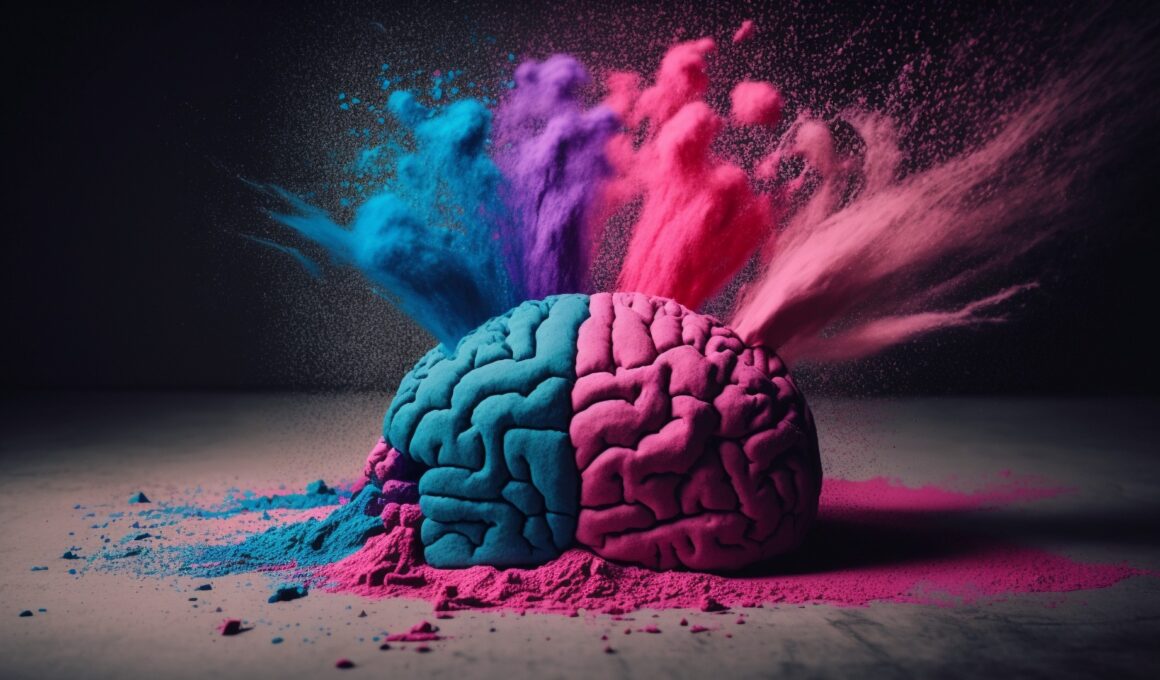In part one we looked at views of creativity throughout the ages and at how our ideas were once thought to come from Gods and daemons that would nudge us and elevate us towards greatness. Of course that’s not the view of today’s science, so what do psychologists have to say on the matter? It might just be even more amazing…
Left Brain, Right Brain?
The first thing I want you to get out of your head is the idea that creativity comes from the ‘creative right side’ of the brain. There is very little evidence to support this theory, and a recent (August 15th 2013) experiment into the proposal (lateralization of brain function) demonstrated that brain areas across the board were used to solve creative tasks. Some functions of the brain do occur on one side more than the other (language is often on the left for instance), but ‘creativity’ is not one of them and it is untrue that some people might be more left brained or right brained. Indeed, in some rare cases individuals have had entire hemispheres of their brain removed and have still been capable of solving creative tasks and coming up with novel ideas. And how could you separate something like maths from creativity anyway? In some cases maths can be creative, and in other instances it is necessary to use mathematics in order to have an intuitive idea.
Synaesthesia and Creativity
Creativity does not reside in one half of the brain then, and indeed it probably doesn’t reside in any particular brain area at all. The very nature of creativity may mean that it is required to occur across the brain – it may be that the different areas of the brain need to talk in order for our ideas and creativity to occur at all.
Evidence for this comes from the fact that more ‘creative types’ such as writers and artists experience something called synaesthesia than average members of the general public. Synaesthesia is a condition in which individuals experience a ‘crossover’ of senses, and this can mean they end up seeing colours when they hear music, or even that they associate sounds with numbers. Some will even ‘see’ grids of numbers when performing maths, or will just get a sense that some letters ‘should be’ red or ‘should be’ furry.
Synaesthesia occurs when there is ‘cross wiring’ or ‘cross-talk’ between different areas of the brain (and it can be hereditary). All of us have connections between the different regions of our brains, but the connections are stronger within the connections normally than they are between them which gives us our ‘modular’ view of the brain. A slightly mutated gene however can lead to more connections between certain areas and thus you give rise to synaesthesia in its various forms.
It has been speculated that our capacity for metaphor then comes from these interconnected areas. We all have some cross-talk between brain regions so we can all understand when we read that ‘the sun is setting on our careers’ or that ‘there was a lick of orange in the sky like a cool breeze licking against my face’. However the artists and poets creating these metaphors have more cross-talk, making them more likely to create these original descriptions in the first place.
Are We All Synaesthetes Then?
A lot of our language and communication also comes from talk between brain areas. Think about it: why is someone with a nice personality considered warm? And someone offish called ‘cold’? Why is some music ‘blue’? Why is yellow so happy? And does our appreciation of art come from this in the first place?
Now think of a round wobbly shape in your mind and a small pointy shape – picture them in your mind’s eye or better yet draw them down on some paper. One of those shapes is a ‘Kiki’ and one is a ‘Booba’. Which one is which? 99% of people will say that Kiki is the spikey shape with no instruction.
This is a ‘cross modal synaesthetic abstraction’ – it is your brain searching for the nearest reference point it can find to categorise the unknown shape. Because the ‘Ki’ noise would create more of a spikey wavelength in the sound, more of a ‘sudden’ pitch, your brain uses that similarity to link the sound and the image.
So this abstraction requires at least two areas of the brain: the visual area and the auditory area. At the same time though we also have cause to believe that it requires the fusiform gyrus to be present and correct. When this part of the brain is damaged or missing, patients lose all synaesthetic ability as well as the ability to think about metaphor. This part of the brain is the ‘crossroads’ between vision, hearing and touch, and is 8 times bigger in humans than it is in other primates. Which is why no chimpanzees appreciate Shakespeare…
But that explains perhaps some of why we like to paint our emotions and sing about the rainbow. It doesn’t explain quite so adequately where our ability to build computers or work out the nature of the universe comes from. For that we’ll need another explanation, and that’s what we’ll be taking a look at in part three…




